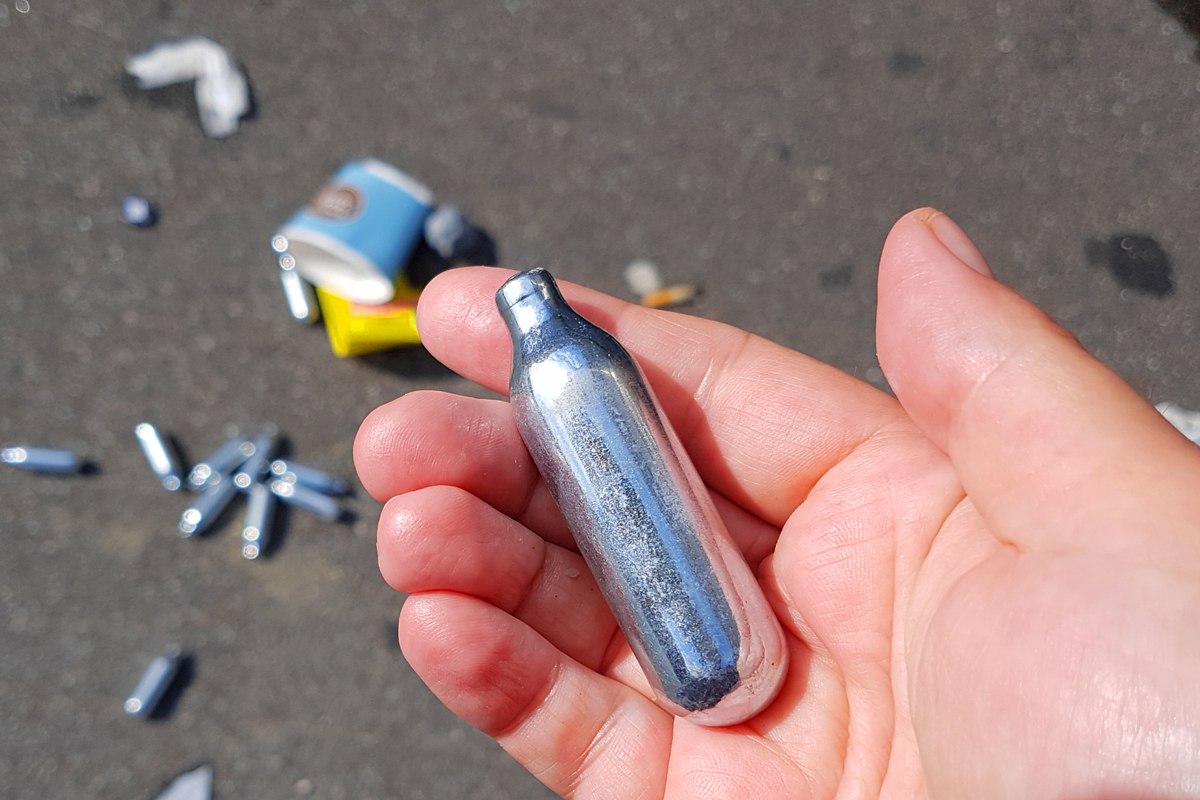In recent years, the recreational misuse of nitrous oxide, commonly referred to as “laughing gas,” has become alarmingly popular among teens and young adults. While nitrous oxide has legitimate medical and industrial applications, its misuse as a recreational drug poses significant risks to health and safety. Adding to the concern is the rise of flavored nitrous oxide products, which make this dangerous activity even more appealing to young people. Parents, educators, and communities must understand the risks and work together to protect kids from the harm associated with nitrous oxide use. Read more to learn the dangers of huffing nitrous oxide, the signs to look for and how to talk to your children.
What is Nitrous Oxide?
Nitrous oxide is a colorless gas used primarily in medical settings as a sedative, pain reliever, and in food production to create whipped cream. When inhaled recreationally, it produces a brief euphoric high, often accompanied by dizziness, laughter, and a sense of detachment from reality. These effects occur because nitrous oxide temporarily deprives the brain of oxygen.
The New Threat: Flavored Nitrous Oxide
Flavored nitrous oxide canisters, often marketed with enticing names like “Berry Bliss” or “Tropical Twist,” are the latest iteration of this dangerous trend. These products are deliberately designed to appeal to younger users, making the act of inhaling nitrous oxide seem more fun and harmless. The sweet, fruity flavors can mask the gas’s chemical taste, lowering the barrier to experimentation and repeated use.
This packaging is deceptive, often resembling harmless consumer goods and making it harder for parents and educators to recognize the danger. By glamorizing nitrous oxide use, these products significantly increase the risk of addiction and serious health consequences among young people.
Health Risks of Huffing Nitrous Oxide
Nitrous oxide misuse can lead to numerous side effects that vary in severity depending on the frequency and amount inhaled. Short-term effects include dizziness, nausea, and headaches, while prolonged misuse may result in confusion, fatigue, and a weakened immune system. In extreme cases, individuals may experience memory loss, impaired motor function, and psychiatric symptoms such as paranoia and hallucinations. The dangers of inhaling nitrous oxide are severe and can have both short- and long-term consequences. Some of the most significant risks include:
- Oxygen Deprivation (Hypoxia): Nitrous oxide temporarily replaces oxygen in the bloodstream, which can lead to hypoxia. Prolonged oxygen deprivation can cause unconsciousness, seizures, and even brain damage.
- Nervous System Damage: Chronic nitrous oxide use can deplete vitamin B12 levels, leading to nerve damage and symptoms like tingling, numbness, or difficulty walking. In severe cases, this damage may be permanent.
- Accidents and Injuries: The disorientation caused by nitrous oxide can lead to falls, accidents, or risky behaviors. Inhaling from a pressurized canister also poses a risk of burns or frostbite to the mouth and throat.
- Death: In rare but tragic cases, nitrous oxide use can result in death, often due to asphyxiation or cardiac arrhythmias.
Warning Signs of Nitrous Oxide Use
Parents and educators should be aware of the warning signs that may indicate nitrous oxide use:
- Presence of small metal canisters (often used for whipped cream dispensers)
- Balloons filled with gas
- Sweet, fruity smells in unusual places
- Unexplained dizziness, confusion, or clumsiness
- Numbness or tingling in extremities
How to Talk to Kids About the Dangers of Huffing Nitrous Oxide
Prevention starts with open, honest conversations. Here are some tips for discussing nitrous oxide with kids:
- Be Informed: Learn about nitrous oxide and its risks so you can speak confidently and answer questions.
- Keep the Conversation Nonjudgmental: Create a safe space for kids to share their thoughts and feelings without fear of punishment.
- Explain the Risks Clearly: Use real-world examples and data to explain how nitrous oxide affects the brain and body.
- Highlight Long-Term Consequences: Emphasize the potential for permanent nerve damage and other severe outcomes.
- Encourage Healthy Coping Mechanisms: Teach kids safer ways to manage stress, boredom, or peer pressure.
The rise of flavored nitrous oxide highlights the importance of staying vigilant in the fight against substance misuse. By understanding the risks and working together, we can protect young people from the dangers of huffing nitrous oxide. Education, open dialogue, and proactive intervention are key to preventing harm and saving lives.
Hanley Foundation is devoted to reshaping the narrative of addiction through prevention, advocacy, treatment, and recovery support. Our comprehensive prevention education programs have positively impacted Florida’s communities, making us the largest prevention services provider. For over four decades, our treatment facility, Hanley Center, has offered private, confidential, and personalized addiction and mental health care, surrounded by a tranquil tropical setting that promotes healing and recovery.



